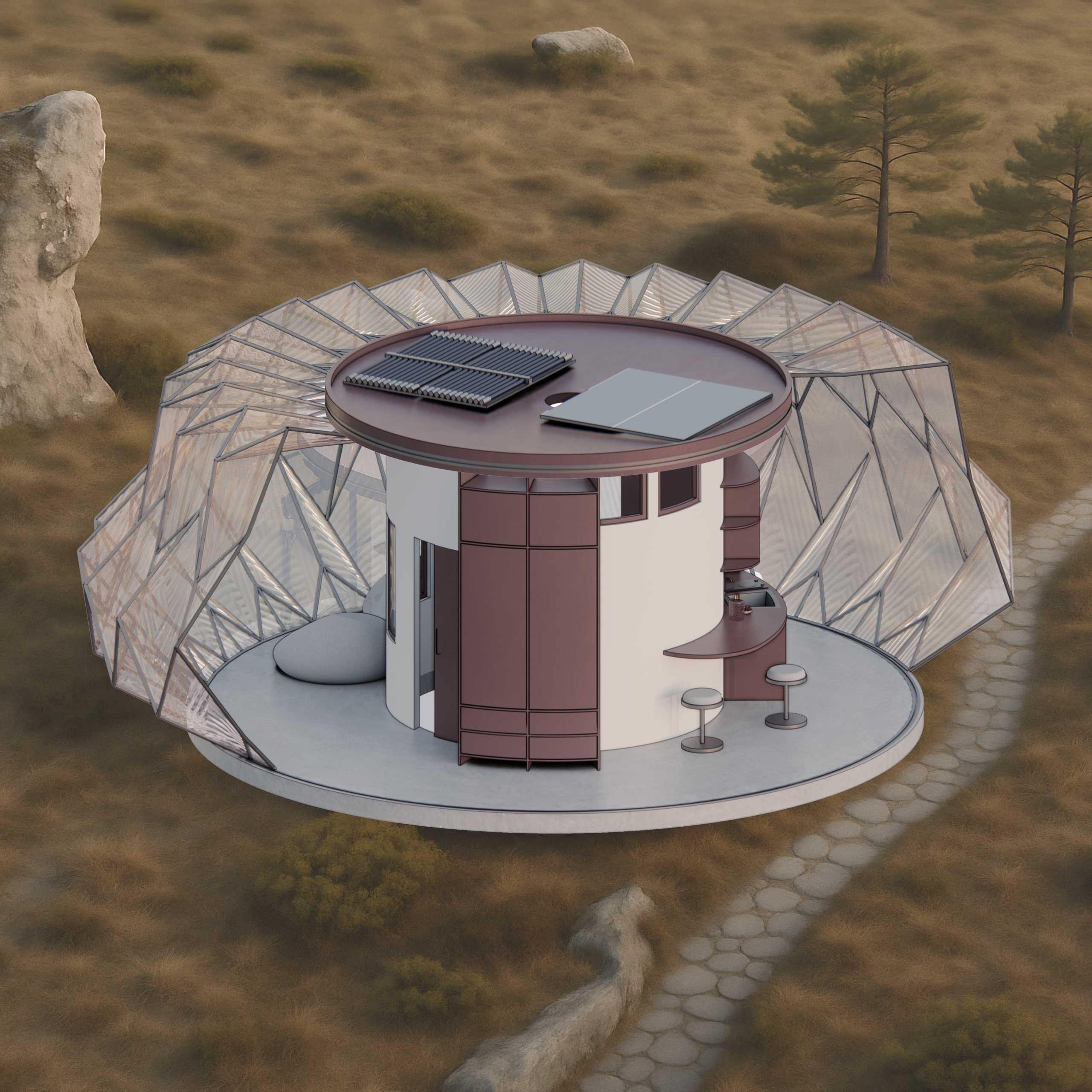Jurcă Ștefan, n. Hlib
05/2023 – Off The Grid 2023

the 37 m² off-grid yoshimura house near Sapporo, Hokkaido, exemplifies minimalist, eco-friendly living. Prefabricated modules enable easy assembly, and the Yoshimura pattern outer skin provides thermal buffering. The home is self-sufficient, collecting rainwater, solar heat, and electricity. Its interior design separates private and communal areas, ensuring comfort and privacy, setting a new standard for sustainable living.

The self-sufficient, off-grid home, embraces a minimalist, environmentally conscious philosophy within its 37 m² footprint. It sources energy efficiently, while offering an interior layout strategically designed for privacy and thermal comfort.

The structure is designed for being assembled out of prefabricated modules, enabling easy transportation and construction with minimal machinery required.

- Flat roof houses a rain-water collector, as well as photovoltaic and solar collector units
- compact layout of the house’s inner circle, arranged directly around the central heating core, reminiscent of vernacular roundhouses
- Outer circle for thermal buffer, as well as additional living spaces
- precast point foundations around an insulated capsule accommodating technical installations
The building’s interior is strategically divided into two distinct layers, the inner circle and the outer circle, prioritizing thermal demands and privacy.
The inner circle encompasses the more private spaces such as sleeping area, the bathroom and a work space, all benefiting from direct proximity to the inner core heating element. The cooking and living spaces are situated in the outer circle.



In line with the off-grid philosophy, the building is designed to be entirely self-sufficient, eliminating the need for central heating, water supply or external electricity. Instead, the structure incorporates a resourceful “sunhouse” scheme. this approach involves collecting rainwater from the roof and directing it into a buffer storage, from where it can be utilized for various household appliances and heated using solar collectors or a compact water heater.
Once heated, the water serves a dual purpose: it is circulated through a convector to warm the inner circle and is also used in different appliances, maximizing efficiency.
A photovoltaic panel and a battery are integrated into the design to provide a consistent, eco-friendly energy power source for household devices.


